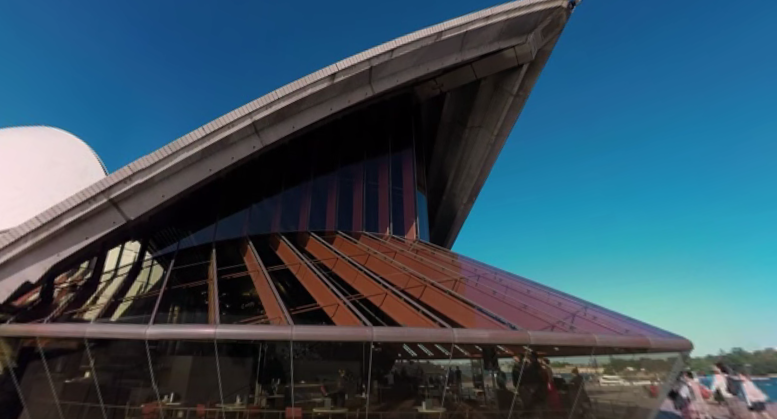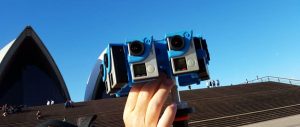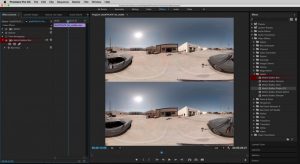While traveling for a 360 video production down under, our head of production, Matt Sheils visited one of Australia’s most iconic sites, the Sydney Opera House. Standing on the steps of the Opera House he had the opportunity to capture the architectural marvel and demonstrate our team’s 360 video workflow.

In the video Matt explains how Jorn Utzon’s entry was chosen out of 233 total designs during the 1956 international competition. The educational piece highlights the materials used to build the landmark and covers other interesting facts such as its $102 million dollar final billing.
Workflow
Matt was able to utilize our team’s typical workflow to output a polished spherical piece for 360 video streaming and virtual reality head mounted display (HMD) playback:
- The first step in this process was capturing the footage itself. Matt utilized a combination of monoscopic and stereoscopic rigs to capture different segments of the piece. This included using a new technique involving shooting monoscopic footage with our Pro12H. Featuring five pairs of cameras on the horizon for capturing stereoscopic footage, the Pro12H can also be used to capture high resolution monoscopic footage with a high degree of frame overlap.

Matt Sheils prepping one of our rigs on set in front of the Sydney Opera House. The next step was managing the media as quickly and easily as possible with 360CamMan. The fact that Matt was working with multiple rigs (one of them being a 12-camera setup) meant that keeping track of which footage was captured with which camera was critical. Matt utilized this software to import the data from the multiple rigs in the right order and to organize the footage for the stitching process. 360CamMan is a powerful tool for managing VR/360 video media files filmed with multi-camera rigs. This software allowed him to format each card and setup his workflow so 360CamMan would automatically recognize which camera a file was associated with and organize them accordingly.

Our team used Mettle VR/360 Tools for Adobe Premiere to add images and text to our spherical video. After stitching his footage, Matt used Mettle SkyBox 360/VR Tools for Premiere Pro to add graphics, text and icons. In particular, this Adobe Premiere plugin’s 2D graphics placement tool allowed Matt to place 2D images into the equirectangular file and to present them with the proper degree of warping for the spherical space. This file was then rendered out of Premiere and was fully prepped for uploading to spherical video players such and YouTube 360 and Facebook 360 as well as VR HMDs.
We’re excited to share one of our latest 360 video adventures with you and hope Matt’s workflow offers some tips and insight for your own spherical projects!





You must be logged in to post a comment.